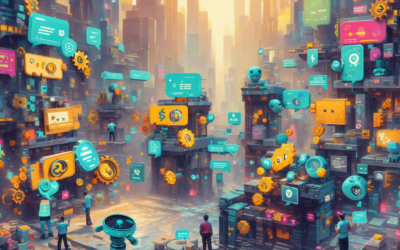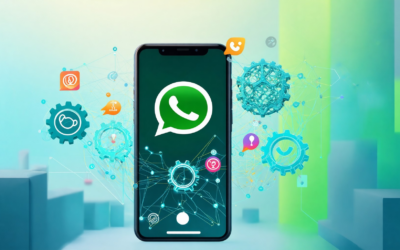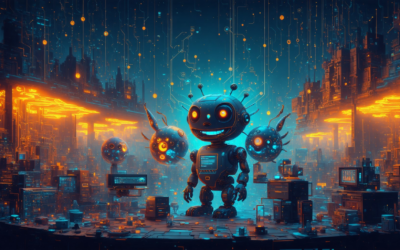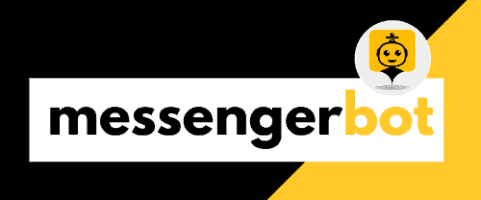In today’s fast-paced digital landscape, businesses are increasingly turning to technology to enhance customer interactions, and one of the most effective tools at their disposal is the FAQ chatbot. This article will guide you through the essential steps to create an effective FAQ chatbot that not only answers your customers’ most common questions but also improves user engagement and satisfaction. We will explore the fundamentals of FAQ chatbots, including their benefits and the types of questions you can program them to answer. Additionally, we will discuss the various options available for creating your chatbot, from free AI solutions to open-source projects on platforms like GitHub. By the end of this article, you will have a comprehensive understanding of how to develop a FAQ chatbot tailored to your business needs, ensuring you can provide timely and accurate responses to your customers. Join us as we delve into the world of chatbots and discover how they can transform your customer service experience.
What is a FAQ chatbot?
A FAQ chatbot is an advanced artificial intelligence (AI) system designed to automate responses to frequently asked questions, enhancing user interaction and streamlining customer service processes. These chatbots function as virtual assistants, providing immediate, accurate, and consistent answers to user inquiries, which significantly improves operational efficiency and user satisfaction.
Understanding the Basics of FAQ Chatbots
FAQ chatbots utilize several key features to optimize user experience:
- Natural Language Processing (NLP): FAQ chatbots utilize NLP to understand and interpret user queries in a conversational manner, allowing for more human-like interactions.
- 24/7 Availability: Unlike human agents, FAQ chatbots can operate around the clock, ensuring that users receive assistance at any time, which is particularly beneficial for businesses with global customers.
- Scalability: These chatbots can handle multiple inquiries simultaneously, making them an ideal solution for businesses experiencing high volumes of customer interactions.
- Integration with Messaging Platforms: FAQ chatbots can be integrated into popular messaging platforms, such as Facebook Messenger, allowing businesses to reach customers where they are most active.
- Data Collection and Insights: By analyzing user interactions, FAQ chatbots can gather valuable data on customer preferences and frequently asked questions, helping businesses improve their services and offerings.
Benefits of Implementing an FAQ Chatbot
Implementing a FAQ chatbot offers numerous advantages for businesses:
- Cost Efficiency: Automating responses reduces the need for extensive customer service teams, leading to significant cost savings.
- Enhanced Customer Experience: Quick response times and accurate information contribute to higher customer satisfaction and loyalty.
- Consistency in Responses: FAQ chatbots ensure that all users receive the same information, reducing the risk of human error.
In conclusion, a FAQ chatbot is a powerful tool for businesses looking to enhance their customer service capabilities. By leveraging AI and integrating with platforms like Messenger, companies can provide efficient, scalable, and consistent support to their customers, ultimately driving growth and improving user engagement. For further insights on the effectiveness of chatbots in customer service, refer to studies by Gartner and Forrester Research, which highlight the growing trend of AI adoption in business operations.
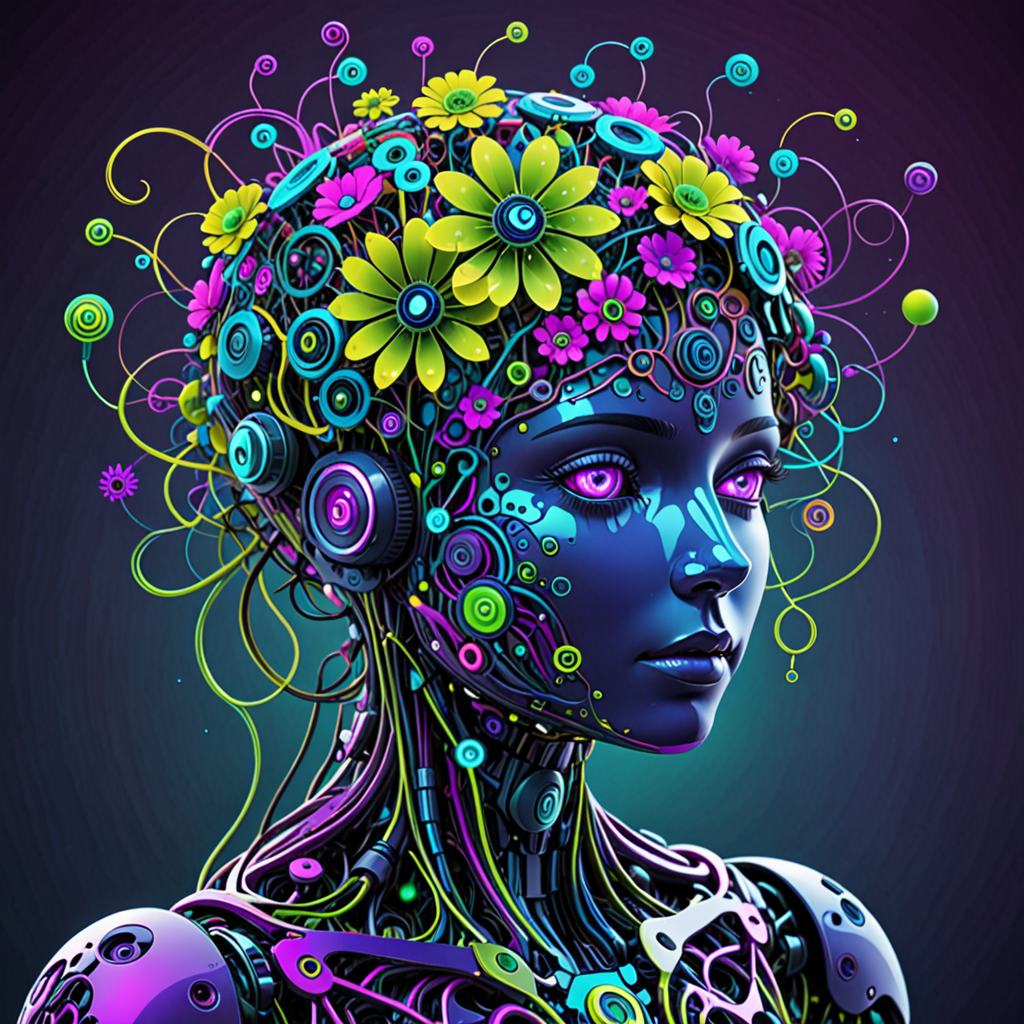
What questions can I ask to chatbot?
Common Questions to Ask Your FAQ Chatbot
When interacting with an FAQ chatbot, it’s essential to ask questions that can help you gauge its capabilities and limitations. Here are some effective questions to consider:
1. **What is your favorite book, movie, or TV show? Why do you like it?**
This question encourages a subjective response that requires personal insight and emotional connection, which chatbots often lack.
2. **What is your dream vacation?**
This question allows for imaginative and personal storytelling, revealing the depth of human desires and experiences.
3. **What is your biggest fear?**
Fears are deeply personal and often tied to individual experiences, making it difficult for a chatbot to provide a genuine answer.
4. **What is your favorite thing about yourself?**
This question invites self-reflection and personal pride, areas where chatbots may struggle to provide authentic responses.
5. **What is your biggest regret?**
Regrets are complex emotions tied to personal history, which chatbots cannot genuinely express.
6. **What is your favorite thing about being human?**
This question taps into the essence of human experience, including emotions, relationships, and consciousness, which are challenging for chatbots to articulate convincingly.
By asking these questions, you can better assess the limitations of a chatbot’s responses compared to the nuanced and emotionally rich answers a human would provide.
Tailoring Questions for Better User Engagement
To enhance user engagement with your FAQ chatbot, consider tailoring your questions based on the specific needs and interests of your audience. Here are some strategies to achieve this:
– **Identify Common User Queries:** Analyze the most frequent questions your users ask and ensure your chatbot is equipped to handle them effectively. This can lead to a more satisfying user experience and reduce frustration.
– **Use Contextual Questions:** Frame questions that relate to the user’s previous interactions or preferences. For instance, if a user previously asked about product features, you might follow up with, “Would you like to know about pricing options for those features?”
– **Encourage Feedback:** Ask users for their thoughts on the chatbot’s responses. Questions like “Was this information helpful?” can provide valuable insights into how well the chatbot is performing and where improvements can be made.
– **Incorporate Personalization:** Utilize data from user profiles to ask personalized questions that resonate with individual users. For example, “Based on your interest in [specific topic], would you like to explore more about it?”
By implementing these strategies, you can create a more engaging and interactive experience for users, ultimately leading to higher satisfaction and retention rates. For more insights on enhancing customer interactions, check out our article on the best AI chatbots.
Can I Talk to AI for Free?
Yes, you can talk to AI for free through various platforms that offer conversational AI services. Engaging with these AI chatbots allows users to experience the benefits of automated responses and interactive communication without any financial commitment. Here are some notable options:
Exploring Free AI Chatbot Options
- D-ID AI: D-ID provides a free trial where users can engage in up to five chats with a digital person. Each interaction allows for six exchanges, offering a more intuitive and human-like experience. This platform is particularly noted for its advanced AI technology that enhances user engagement.
- Chatbots on Messaging Apps: Many messaging platforms, such as Facebook Messenger, offer free access to AI chatbots. These bots can assist with a variety of tasks, from answering questions to providing recommendations, all at no cost to the user.
- OpenAI’s ChatGPT: OpenAI offers free access to its ChatGPT model, which allows users to interact with a sophisticated AI capable of answering questions, providing information, and engaging in casual conversation. Users can access this service through the OpenAI website.
- Google Assistant and Siri: Both Google Assistant and Siri are free AI services available on smartphones and smart devices. Users can ask questions, set reminders, and perform various tasks through voice commands without any charges.
- Other Free AI Platforms: There are numerous other platforms, such as Replika and Chatbot.com, that offer free trials or basic versions of their AI chat services, allowing users to experience AI conversations without any financial commitment.
Comparing Paid vs. Free FAQ Chatbots
When considering whether to use a free or paid FAQ chatbot, it’s essential to weigh the features and benefits of each option. Free chatbots often provide basic functionalities, which can be sufficient for small businesses or personal use. However, paid options typically offer enhanced capabilities such as:
- Advanced Customization: Paid chatbots allow for greater customization to align with your brand’s voice and user experience.
- Integration with Other Tools: Many paid services integrate seamlessly with CRM systems, email marketing platforms, and social media, enhancing overall business operations.
- Analytics and Reporting: Paid chatbots often come with robust analytics tools that provide insights into user interactions, helping businesses optimize their strategies.
- Priority Support: With a paid service, you typically receive priority customer support, ensuring any issues are resolved quickly.
Ultimately, the choice between free and paid FAQ chatbots depends on your specific needs and the level of engagement you wish to achieve. For more insights on enhancing customer support with AI, explore our resources on elevating customer support.
What are the four types of chatbots?
Understanding the different types of chatbots is essential for selecting the right solution for your business needs. Here’s a breakdown of the four primary types of chatbots:
- Menu-based Chatbots: These are the simplest form of chatbots, providing users with a predefined set of options to choose from. Users navigate through menus to find the information they need. This type is effective for straightforward queries but lacks flexibility in conversation.
- Rule-based Chatbots: Building on the menu-based model, rule-based chatbots utilize a decision tree approach, where responses are generated based on specific user inputs. They operate on an if/then logic, allowing for more dynamic interactions than menu-based chatbots, but still limited to predefined rules.
- AI-powered Chatbots: These chatbots leverage artificial intelligence and natural language processing (NLP) to understand and respond to user queries in a more human-like manner. They can learn from interactions, improving their responses over time. AI-powered chatbots are capable of handling complex queries and providing personalized experiences.
- Hybrid Chatbots: Combining the strengths of both rule-based and AI-powered chatbots, hybrid chatbots can switch between scripted responses and AI-driven interactions. This versatility allows them to handle a wide range of inquiries effectively, making them suitable for various applications, including customer service and personal assistants.
Choosing the Right Type of Chatbot for Your Needs
Selecting the appropriate chatbot type depends on your specific requirements and the complexity of interactions you wish to facilitate. Here are some considerations:
- For Simple Queries: If your primary goal is to address straightforward questions, a menu-based or rule-based chatbot may suffice. These options are easy to implement and can efficiently guide users to the information they need.
- For Complex Interactions: If you anticipate more intricate user interactions, an AI-powered or hybrid chatbot is advisable. These chatbots can adapt to user inputs and provide personalized responses, enhancing user satisfaction.
- Integration with Messaging Platforms: If you plan to engage users through platforms like Facebook Messenger, consider a Messenger Bot that can utilize any of the aforementioned types. This allows for seamless communication across popular messaging apps.
By understanding the strengths and limitations of each chatbot type, you can make an informed decision that aligns with your business goals and enhances user engagement.

How do I make a FAQ bot?
Creating a FAQ bot can significantly enhance user engagement and streamline customer interactions. Here’s a step-by-step guide to help you develop your own FAQ chatbot effectively.
Step-by-Step Guide to Creating an FAQ Chatbot
- Choose a Platform: Select a platform for your FAQ bot. Popular options include Azure AI, Google Dialogflow, and Messenger Bot. Each platform offers unique features and integrations.
- Set Up Your Bot:
- For Azure AI:
- Navigate to the Azure portal and sign in.
- Go to the Language Studio and select the “Custom Question Answering” feature.
- Click on the “Create a bot” button on the Deploy project page. This will redirect you to the Azure AI Bot Service creation page.
- Configure the bot settings, including naming your bot and selecting the appropriate subscription and resource group.
- Hit the “Create” button to finalize the setup.
- For Azure AI:
- Define FAQs: Compile a list of frequently asked questions relevant to your audience. Ensure that the questions are clear and concise. Provide detailed answers that include keywords related to your business or service to enhance SEO.
- Train Your Bot: Input your FAQs into the bot’s training module. This will help the bot understand how to respond to user queries effectively. Utilize machine learning capabilities to improve the bot’s accuracy over time.
- Test Your Bot: Conduct thorough testing to ensure the bot responds correctly to various queries. Adjust the training data as necessary based on user interactions.
- Deploy Your Bot: Once testing is complete, deploy your bot on your website or integrate it with messaging platforms like Facebook Messenger for broader reach.
- Monitor and Optimize: After deployment, continuously monitor the bot’s performance using analytics tools. Gather user feedback and make adjustments to improve response accuracy and user satisfaction.
Utilizing FAQ Chatbot Python for Development
If you’re inclined towards programming, using Python for developing your FAQ chatbot can provide flexibility and control. Here’s how you can leverage Python:
- Frameworks and Libraries: Utilize frameworks like Flask or Django to create a web application for your chatbot. Libraries such as ChatterBot can help in building conversational agents quickly.
- Integrate APIs: Use APIs from platforms like Messenger Bot to connect your Python-based chatbot with messaging services, allowing for seamless user interactions.
- Data Handling: Store FAQs and responses in a database (like SQLite or MongoDB) to manage and retrieve data efficiently.
- Machine Learning: Implement machine learning algorithms to enhance the bot’s ability to understand and respond to user queries more accurately.
For more detailed guidance on creating an FAQ bot, refer to the official documentation from Microsoft Azure and Google Dialogflow.
FAQ Chatbot GitHub
Leveraging GitHub for FAQ chatbot resources can significantly enhance your development process. GitHub serves as a collaborative platform where developers can share code, access libraries, and contribute to open-source projects. By utilizing GitHub, you can find a wealth of resources tailored specifically for building and optimizing FAQ chatbots.
Leveraging GitHub for FAQ Chatbot Resources
GitHub hosts numerous repositories that provide templates, libraries, and frameworks for creating FAQ chatbots. These resources can help streamline the development process, allowing you to focus on customizing your chatbot to meet specific user needs. For instance, you can explore repositories that offer pre-built FAQ chatbot solutions, which can be easily integrated into your existing systems. Additionally, many projects come with comprehensive documentation, making it easier for developers of all skill levels to implement and modify the code.
Finding Open Source FAQ Chatbot Projects on GitHub
When searching for open-source FAQ chatbot projects on GitHub, consider using keywords such as “FAQ chatbot,” “chatbot framework,” or “AI chatbot.” This will yield a variety of projects ranging from simple implementations to more complex systems that utilize advanced AI techniques. Engaging with these projects not only provides you with practical examples but also allows you to connect with other developers in the community. Contributing to these projects can enhance your skills and expand your professional network.
Is chatbot a good or bad thing?
When evaluating whether chatbots are beneficial or detrimental, it’s essential to consider their impact on user experience, operational efficiency, and overall business outcomes. Chatbots, particularly FAQ chatbots, have transformed the way businesses interact with customers, offering both advantages and disadvantages.
Evaluating the Pros and Cons of Chatbots
Chatbots provide numerous benefits that can enhance customer service and streamline operations:
- 24/7 Availability: Chatbots can operate around the clock, providing instant responses to customer inquiries at any time, which significantly improves customer satisfaction.
- Cost Efficiency: By automating responses to frequently asked questions, businesses can reduce the need for extensive customer service teams, leading to lower operational costs.
- Scalability: Chatbots can handle multiple inquiries simultaneously, allowing businesses to scale their customer service efforts without a proportional increase in resources.
- Data Collection: They can gather valuable data on customer preferences and behaviors, which can inform marketing strategies and product development.
However, there are also potential drawbacks to consider:
- Lack of Human Touch: While chatbots can handle basic inquiries, they may struggle with complex issues that require empathy and nuanced understanding, leading to customer frustration.
- Miscommunication Risks: If not programmed correctly, chatbots can misunderstand user queries, resulting in irrelevant or incorrect responses.
- Dependence on Technology: Over-reliance on chatbots may lead to neglecting personal customer interactions, which can diminish the overall customer experience.
The Future of Chatbots in Customer Service
The future of chatbots looks promising, especially as advancements in artificial intelligence continue to enhance their capabilities. As businesses increasingly adopt AI-driven solutions, chatbots are expected to become more sophisticated, offering personalized interactions that mimic human conversation. This evolution will likely address many current limitations, making chatbots an integral part of customer service strategies.
For instance, platforms like Brain Pod AI are leading the way in developing advanced chatbot technologies that can better understand and respond to user needs, ensuring a more seamless interaction. Additionally, tools like Messenger Bot are designed to optimize customer engagement through automated responses and workflow automation, further enhancing the customer experience.
In conclusion, while chatbots present both advantages and challenges, their potential to improve efficiency and customer satisfaction cannot be overlooked. As technology evolves, the integration of chatbots into customer service will likely become more refined, making them a valuable asset for businesses.


